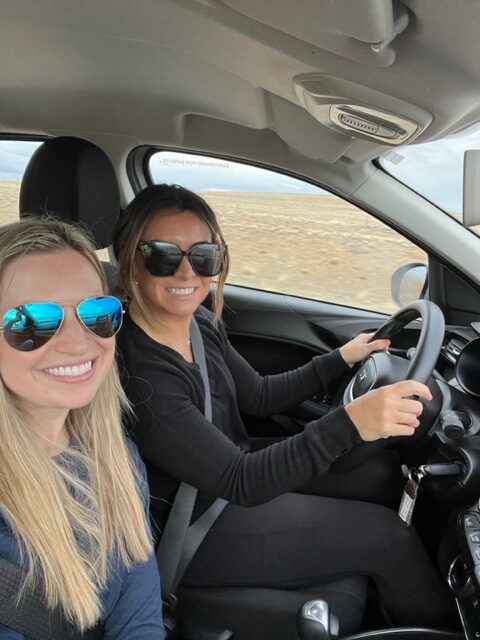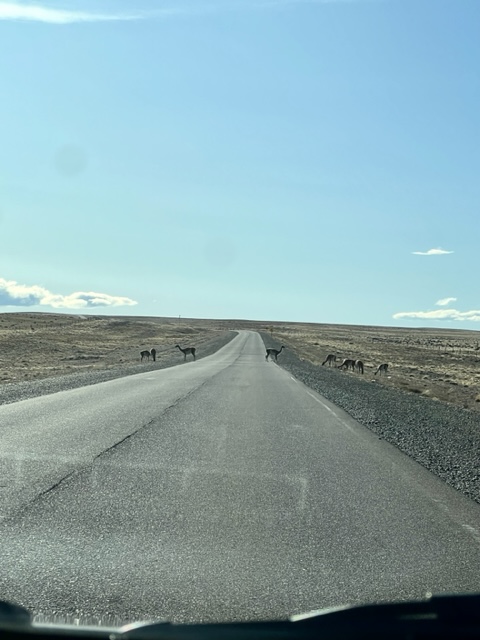


What to REALLY expect if you’re driving in Patagonia. We learned some of these the hard way.
Driving in Patagonia gives you the freedom to explore the region at your own pace, without having to rely on public transportation schedules or tour groups.
First things first: the borders aren’t open 24/7! Ask the car rental what the times are – when we were there it was open 8am-8pm. Plan accordingly because most routes don’t have hotels along the way.
A permit is required between the borders. This should be requested with the car company 10 days in advance! To find the right contact, I had to go to the website FAQs page for Hertz.
Almost all cars are standard. If you can’t drive stick, book an automatic car in advance (it will likely cost a bit more!) If it doesn’t distinguish what kind of car when you book, assume it’s standard.
There are areas without service and I wouldn’t trust google maps either. In this case, an old school map is the way to go. With only a few roads, it’s not complicated.
The main highways could be gravel roads. Make sure you’ve got an SUV, 4 wheel drive OR a spare tire!
There are only a couple of gas stations and the borders don’t allow tanks of gas.
Some hotels will provide gas if asked but the amount is capped.
Give yourself extra time at the border. There will be two stops, one for both countries. You’ll need your passport and driving permit.
It could be 5 minute stop at the border crossing. But if you happen to come across traffic or a motorcycle crew, it could be up to an hour wait.
The scenery can be a bit drab outside of the mountainous areas. It’s mostly small grassland hills with low shrubs.
Yet in Torres del Paine or El Chalten, you will have a front-row seat to some of the most awe-inspiring vistas in the world.
Keep an eye out for the Guanaco and Darwin’s Rhea, or the ‘running birds’. They can sprint out into the street and cause an accident.
One of the more interesting sites, is the bones. Guanaco ribs, skulls etc laid out – some have been caught in the fences and some succumbed to the puma.
Once you enter the Torres del Pines area, keep an eye out for pumas, which Patagonia has the highest density of in the world.
For specific directions from El Calafate to Torres del Pines:
If you feel confident about your gas and car, take Route 40 all the way to the Paso Río Don Guillermo border crossing station (about 2 hours). It’s the shortest route, but half of it is on gravel (a main highway road!) From the border, it’s about an hour to most of the hotels in the park.
If you do need gas or you’re in a basic sedan, take route 40 to route 5. Then you can fill up for gas in Esperanza, one of the only real stations in the region. From there, take route 7 until you see the sign for the border and then turn right onto a gravel road. It’s another 15 mins until you reach the Argentinian border crossing, then another 5 minutes until stop at the Chilean border.
